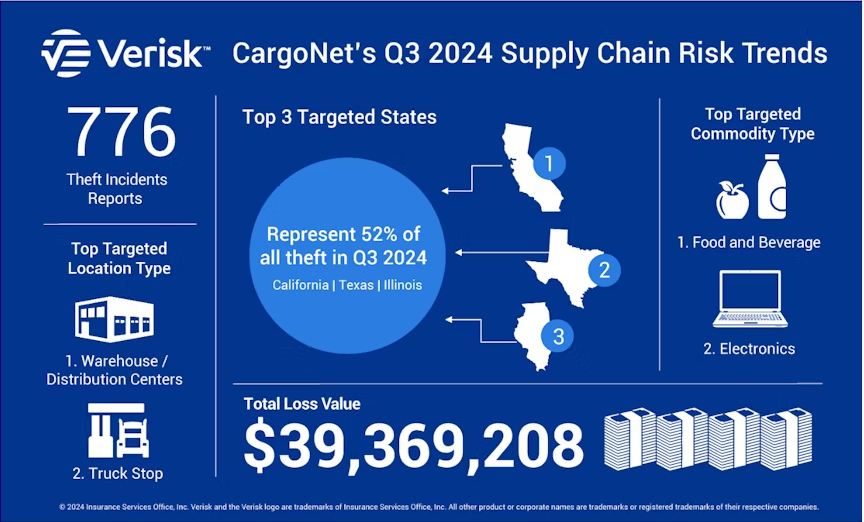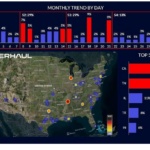CargoNet, a division of Verisk that focuses on preventing and recovering stolen cargo, has released its analysis of cargo theft patterns for the third quarter of 2024. The report reveals a notable rise in theft incidents compared to last year, as well as changes in the methods used by organized crime groups.
Key points from the report include:
- 776 cargo theft incidents were recorded in the U.S. and Canada during Q3, reflecting a 14% increase from the same period in 2023.
- The value of stolen goods surpassed $39 million for the quarter.
- There was a slight 1.6% drop in thefts compared to Q2 2024, though this is expected to narrow as delayed reports come in.
The main forces behind cargo theft are organized crime rings using sophisticated methods, often involving document fraud, identity theft, and a clear intent to steal the goods they are supposed to transport. These tactics include:
- Advanced Phishing Tactics: Criminals are increasingly hacking into trucking companies’ official email accounts to secure shipping contracts, bypassing checks and exploiting industry policies that only accept rate confirmations from official emails.
- Purchased Authorities: While California used to be a hotspot, criminals are now targeting new authorities in states considered lower-risk, as many companies have stopped working with new carriers from California.
- Improved Evasion Strategies: Thieves are swapping license plates, driver’s licenses, and vehicle numbers between pickups, making it harder for law enforcement to track them via FMCSA vehicle data. These thefts often happen over multiple days, with stolen cargo being stored at central locations to maximize the number of loads taken before their actions are discovered.
Changes in the types of goods targeted compared to Q3 2023 include:
- Decreased thefts: Solar panels, motor oils, and energy drinks
- Increased thefts: Footwear, computers, high-end audio systems, and hard liquor
CargoNet emphasized the importance of staying alert and adapting security strategies throughout the supply chain. They expect organized theft rings to continue refining their methods to avoid detection and compliance checks going forward.





